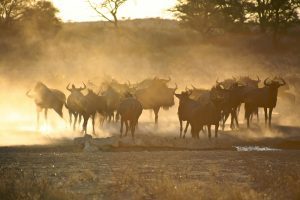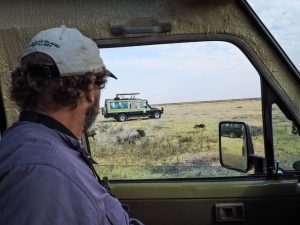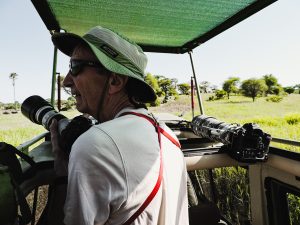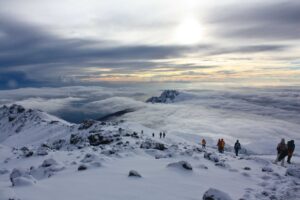Quick Facts
About Kilimanjaro National Park
Peak Time
June - October
Best Time To Go
Year-round, but best climbing conditions from June to October and January to March
Famous For
Africa’s highest mountain, Mount Kilimanjaro
Home Of
Mount Kilimanjaro, diverse ecosystems, and unique wildlife
Overview
Kilimanjaro National Park is one of the most iconic destinations in the world, home to Mount Kilimanjaro, the highest mountain in Africa and the tallest free-standing mountain in the world, standing at 5,895 meters (19,341 feet). Located in northern Tanzania, the park covers an area of 1,688 square kilometers and encompasses the entire mountain, including its three volcanic cones: Kibo, Mawenzi, and Shira. Climbing Kilimanjaro is a bucket-list adventure for trekkers from around the globe, offering breathtaking landscapes that range from lush rainforests to alpine deserts and snow-capped peaks. Whether you’re an experienced mountaineer or an adventurous traveler, Kilimanjaro promises an unforgettable experience.
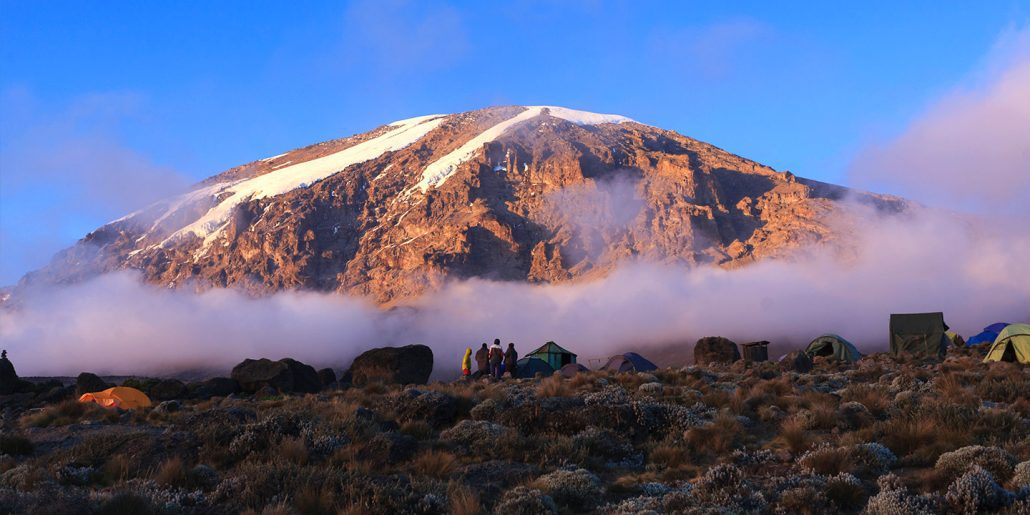
Wildlife
Though Mount Kilimanjaro is primarily known for its towering presence and challenging climb, the surrounding national park is home to a surprising variety of wildlife. The lower slopes of the mountain are covered in tropical rainforests that provide habitat for elephants, buffaloes, blue monkeys, and the elusive leopards. As trekkers ascend, the wildlife becomes scarcer, but the park is home to several species that have adapted to the mountain’s extreme conditions, including bushbucks, duikers, and a variety of birdlife such as the scarlet-tufted malachite sunbird. The diversity of ecosystems across Kilimanjaro—from lush forests to moorlands and alpine zones—makes it a unique destination for nature enthusiasts.
Chimpanzee Tracking
Chimpanzee tracking in Mahale Mountains National Park is an unforgettable experience. Guided by expert trackers, visitors hike through the park’s thick forests in search of the M-group chimpanzees, which are accustomed to human presence and often allow visitors to get close enough for detailed observation. Watching the chimps interact, play, and groom each other is an intimate and rare experience. Mahale’s rugged terrain and the dense forest make the hike challenging, but the reward of seeing these wild primates in their natural environment is more than worth the effort.
Scenic Landscapes
Kilimanjaro National Park is renowned for its diverse and striking landscapes that change dramatically as you ascend the mountain. Starting in the lush rainforests of the lower slopes, trekkers pass through moorlands dotted with giant groundsels and heathers, and then enter the alpine desert zone, characterized by barren landscapes and rugged volcanic rock. At higher altitudes, the climbers are rewarded with panoramic views of snow-capped peaks, glaciers, and the vast African plains below. The views from the summit, Uhuru Peak, are breathtaking and offer a once-in-a-lifetime experience as the highest point on the continent.
Kilimanjaro Routes
Climbing Mount Kilimanjaro is the park’s main attraction, and there are several well-established routes to the summit, each offering a different experience:
Known as the easiest route, it’s the only one with hut accommodations. It’s a popular choice for those seeking a relatively comfortable climb.
One of the most popular routes, offering a scenic and diverse trek. It’s known for its challenging steep sections and stunning landscapes.
A quieter, less crowded option with beautiful scenery and a high success rate due to its longer acclimatization period.
The only route that approaches Kilimanjaro from the north, near the Kenyan border, offering drier conditions and fewer trekkers.
The steepest and most challenging route, best suited for experienced climbers looking for a short, intense trek.
Activities
Kilimanjaro National Park offers a range of activities for visitors beyond climbing the mountain itself:
- Mount Kilimanjaro Trekking: Climbing to the summit of Mount Kilimanjaro is the park’s main activity, offering several routes to suit different levels of fitness and experience.
- Day Hikes: For those who don’t want to summit, there are shorter day hikes that explore the lower slopes of the mountain, allowing visitors to experience the beautiful forests and wildlife.
- Wildlife Viewing: Spot animals like elephants, monkeys, and antelopes in the lower forests of the park.
- Bird Watching: With over 150 bird species, including the malachite sunbird and white-necked raven, Kilimanjaro is a great destination for bird enthusiasts.
- Cultural Tours: Explore nearby villages and meet the local Chagga people, learning about their rich culture and traditions as you visit coffee farms and experience their way of life.

Inspired by What You See? Let’s Bring Your Journey to Life!
Best Time to Visit
The best time to climb Mount Kilimanjaro is during the dry seasons, from June to October and January to March, when the weather is clear, and the trails are in optimal condition. During these months, trekkers are more likely to have clear skies, offering the best views of the surrounding landscapes and the summit. However, Kilimanjaro National Park can be visited year-round, with the wet season (April to May, November) bringing lush greenery to the lower slopes, although trekking during this time can be more challenging due to rain and slippery trails.
Accommodation
Accommodation options for visitors to Kilimanjaro National Park range from huts along the Marangu Route to tented campsites on other climbing routes. For those not climbing, there are numerous lodges and hotels in nearby towns such as Moshi and Arusha, which offer comfortable stays with stunning views of the mountain. Many accommodations also provide facilities for relaxation after a long trek, including hot showers, good food, and warm hospitality.
Why Visit Kilimanjaro National Park
Kilimanjaro National Park is a world-renowned destination, offering the challenge and thrill of summiting the highest peak in Africa. Beyond the climb, the park’s diverse ecosystems, unique wildlife, and stunning landscapes make it a must-visit for anyone seeking adventure, natural beauty, and a connection with one of the world’s greatest natural wonders. Whether you’re trekking to the summit, exploring the lower forests, or simply marveling at the snow-capped peak from a distance, Mount Kilimanjaro provides an unforgettable experience for every traveler.

